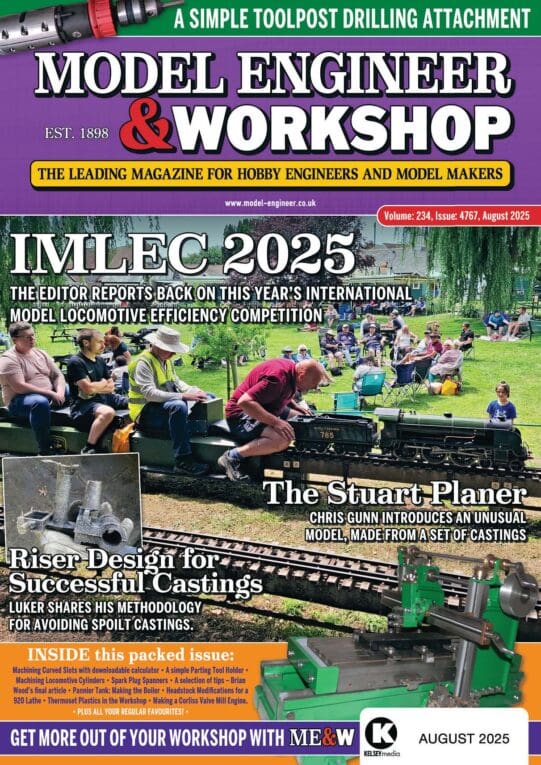… however I think fractions often get a raw deal, and many only associate them with feet and inches, and consider then to be too complicated, but they are quite universal, e.g. 25% of 1M is 250mm and a 1/4M, 25% / 1/4 0f 1 Tonne is 250 Kg. / 1/4 Tonne, 25% of 1 Ton is 5 CWT / 1/4 Ton. The thing is they work with both imperial and metric,…
Regards Nick.
Don’t get me wrong about fractions, they’re fundamental, and very useful in their place. Particularly good for maths involving ratios, especially common cases like sharing a quantity between ‘n’ people. Before the industrial revolution, most commerce and building work was well served by fractions. Then life got complicated!
Unfortunately it seemed convenient to our forefathers to build fractions into the weights and measures system by creating ad-hoc units. Very often done by region, or trade, or both. But, after a few centuries of aggro, pre-decimal Britain had simplified Imperial considerably:
12 inches make 1 foot (¹⁄₁₂)
3 feet make 1 yard (⅓)
5½ yards make 1 Rod, Pole or Perch (²⁄₁₁)
40 Poles make 1 Furlong (¹⁄₄₀)
8 Furlongs make 1 Mile (⅛)
3 Barleycorns make 1 inch (⅓)
12 lines make 1 inch (¹⁄₁₂)
4 inches make 1 hand (¼)
9 inches make 1 span (⅑)
18 inches make 1 cubit (¹⁄₁₈)
2½ feet make 1 pace (⅖)
21 shillings make 1 Guinea (1 pound + ¹⁄₂₀ ie 5%)
20 shillings make 1 Pound (¹⁄₂₀)
5 shillings make 1 crown (⅕)
8 half-crowns make 1 pound (⅛)
10 florins make 1 pound (⅒)
12 pence make 1 shilling (¹⁄₁₂)
4 farthings make 1 pence (¼)
16 Drams make 1 ounce (¹⁄₁₆)
16 ounces make 1 pound (¹⁄₁₆)
14 pounds make 1 stone (¹⁄₁₄)
28 pounds make 1 quarter (¹⁄₂₈)
4 quarters make 1 hundredweight (¼)
20 hundredweights make 1 ton (¹⁄₂₀)
Even though I’ve left out liquid measure, square measure, nautical measure or any of the trade measures, I hope it’s obvious that, taken as a whole, even after a decades of trying to clean it up, the Imperial system based on fractions is clumsy and obscure. The maths starts well, nice and simple, but then grows into a monster!
Part of the problem is that Imperial relies heavily on fractions, which only work well inside their comfort zone. Another is that Imperial is so simple and cuddly on the surface. It’s the Nigerian Prince of Weights and Measures! Seems great to traditionalists building an LBSC loco from a fractional dimensioned plan with their inch based Myfords, and then enjoying a friendly pint down the pub. They’re not wrong, but their experience is of Imperial in it’s easiest basic form, where the system hasn’t shown it’s horns yet.
The real trouble kicks off when serious maths is attempted. It’s not that Imperial and fractions don’t work, it’s that the system is internally incoherent – a mess. In consequence, maths using it is full of conversion factors needed because the system encourages many different units for the same thing. Miles per hour, feet per second, and many others, everyone an opportunity for mistakes.
Metric is a massive simplification, largely because it was designed to eliminate unnecessary conversions:
- Fractions are eliminated in favour of decimals, based on 10.
- Units are defined from single standards, one each for length, weight, time and amperes. Sub-units are always scaled in powers of 10.
- As far as possible, metric units are related rationally. Unlike Imperial, where relationships between units are an accident of history!
Back to fractions, consider this example:
⅐ + ⅛ + ⅑ = ? (Hint: Lowest Common Denominator)
⅐ + ⅛ = ¹⁵⁄₅₆
¹⁵⁄₅₆ + ⅑ = ¹⁹¹⁄₅₀₄, or 0.37896825396825
Much easier to do the same sum in decimal:
0.142857143 +
0.125 +
0.1111111111 =
0.378968254
I look at decimal as a general purpose fraction. 0.125 is shorthand for ¹²⁵⁄₁₀₀₀, and 0.142857143 is shorthand for ¹⁴²⁸⁵⁷¹⁴³⁄₁₀₀₀₀₀₀₀₀₀₀ As decimal fractions all have factor 10 denominators, they follow the rules of ordinary arithmetic. Compared with fractions, decimals are docile, and they facilitate mechanical aids like log tables, slide rules, and calculators.
Weird thing about the psychology of change is that although many want to retain Imperial Measure, no-one wants to go back to £sd. I think because we all had to do mildly hard sums in £sd, and that it had sharp horns was painfully obvious. Is two thirds of a pound 13/4d or not?
Now I’ve mentioned them, anyone got any experience with slide rules? Not truthful devices by the standard Michael hoped of Bosch/Dremel, but still brilliant in my opinion. Occasionally use my school Aristo to this day!
Dave
Nealeb.







